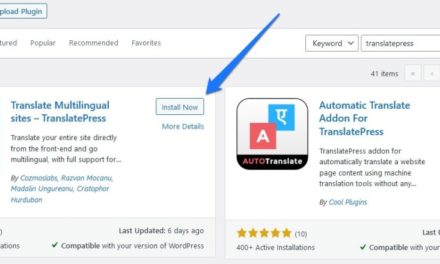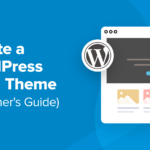Translating a website is not a small task. Depending on the size of the site, the process can take anywhere from hours to weeks or even months. That’s without factoring in the technical aspects of translation, such as how to guide users to translated pages.
Fortunately, with WordPress, translating websites is much simpler from a technical standpoint. That’s because translation plugins for WordPress enable you to easily create new versions of your site in other languages. Plus, most plugins will take care of technical elements like language switchers.
In this article, we’ll discuss how translation plugins work and why you should use one. Then, we’ll introduce you to five of the best (and latest) translation plugins for WordPress. Let’s get to it!
What Is a Translation Plugin?
A WordPress translation plugin is an extension that helps you create a multilingual website by translating your content into different languages. These plugins can drastically simplify the process of translating your material. Many offer automatic translation, manual translation, or a combination of both.
If you’re not sure what the difference is between manual and automatic translation, here’s a quick breakdown of how each method works:
- Manual translation. Some plugins allow you to manually translate your content by creating separate posts, pages, or custom post types for each language. This method gives you greater control over translations and usually results in higher-quality translations (since they are done by humans). However, manual translations can be time-consuming and may require hiring professional translators.
- Automatic translation. Some translation plugins connect your site to machine translation engines such as Google Translate or Microsoft Azure Translator. These plugins detect your website’s content and automatically translate it into the languages you select. While automatic translations are quick and easy, they may not always be accurate or convey the intended meaning.
- Combination of manual and automatic translation. With some plugins, you can leverage a combination of both manual and automatic translations. This approach allows you to use machine translations as a starting point and then manually edit and refine them as needed.
Your choice of WordPress translation plugin will likely come down to two factors. These are the type of translation you want to use and the user experience you’re looking for. Now, let’s discuss why you may want to use a translation plugin for WordPress.
Why Sites Use Translation Plugins
The primary goal of using a translation plugin is to make your site available in other languages. Generally speaking, this makes it more accessible and allows you to reach a larger audience. Using a WordPress translation plugin comes with its own set of benefits, including:
- Improving the user experience. Offering content in a user’s native language significantly enhances their browsing experience. This can lead to better engagement and increased trust in your website.
- It’s cost-effective. Compared to building a separate website for each language or hiring professional translators for each piece of content, using a translation plugin is often more cost-effective and time-efficient.
- Access to language switchers. Most translation plugins include a language switcher feature. This makes it simple for users to toggle between languages on your website.
- Improving Search Engine Optimization (SEO). Multilingual websites have an edge in search engine rankings. Since they target keywords in various languages, they can gain visibility in the search results for multiple languages.
You don’t need to use a plugin to translate your WordPress website. However, using one can certainly help streamline this process. Even if you have the budget to pay for a developer and translators, a plugin still may be worth it – for simplicity’s sake.
5 Cutting Edge Translation Plugins for Your WordPress Site
Next, we’re going to discuss some of the best and latest WordPress translation plugins. We’ll tell you what makes each plugin unique. This way, you can get a sense of which option is the best fit for your website.
1. Translate WordPress with GTranslate
First, let’s discuss Translate WordPress with GTranslate. This is a popular WordPress plugin that uses Google Translate to automatically translate your website content into multiple languages. It offers a customizable language switcher which can be added as a widget, shortcode, or menu item.
The plugin has both free and premium versions, with the paid option offering additional features. For instance, the paid plugin includes neural machine translations, search engine indexing, manual translation editing, and URL translation.
Keep in mind that this version doesn’t come with a yearly license (as most premium WordPress plugins do). Instead, you’ll need to pay for a monthly subscription to use the plugin’s premium version.
Pricing: Translate WordPress with GTranslate is free. However, you can get the premium version with advanced features starting at $9.99 per month.
2. TranslatePress
TranslatePress is a user-friendly WordPress translation plugin that enables you to create a multilingual website with ease. One of its main selling points is the ability to translate content directly from the front end. Plus, it uses a visual translation interface, allowing you to see changes in real-time.
The plugin supports both manual and automatic translating, integrating with Google Translate for machine translations. Furthermore, TranslatePress is compatible with various themes and plugins, including certain page builders and WooCommerce. This helps ensure seamless integration with your website.
Additionally, with TranslatePress, you get access to SEO-friendly features. You’ll be able to translate metadata, URLs, and create separate sitemaps for each language. With the free version, you can translate your website into one additional language. Meanwhile, the premium version offers support for unlimited languages and additional features like translator accounts and automatic user language detection.
Pricing: TranslatePress offers both free and premium versions. Prices for paid plans are only listed in euros on the company’s site and start at €7.99 per month ($8.50 USD at the time of writing).
3. WPML
WPML (WordPress Multilingual Plugin) is a powerful and widely-used WordPress plugin for creating and managing multilingual websites. Its main selling points include support for manual translations and integration with professional translation services.
Additionally, the plugin offers advanced translation management, allowing you to assign translation roles and track translation progress. What’s more, it provides extensive translation options, supporting the translation of custom post types, custom fields, widgets, and menus.
WPML is also SEO-friendly, enabling the translation of metadata, permalinks, etc. It also generates language-specific sitemaps. Even better, the WPML plugin offers a user-friendly interface and a dedicated support team to ensure a smooth user experience.
This WordPress translation plugin doesn’t offer a free version. Still, its features and compatibility make it a popular choice for those looking to create a professional, multilingual website with high-quality translations.
Pricing: WPML licenses start at $39 per year.
4. MultilingualPress
MultilingualPress is a unique WordPress translation plugin that leverages the WordPress Multisite feature to create separate sites for each language. This option enables you to manage translations independently for each site, gain greater control over the translation process, and avoid any performance loss.
By creating separate sites, MultilingualPress ensures that each language version functions independently, reducing the risk of compatibility issues with themes and plugins. The plugin also supports automatic hreflang tags, which improves SEO by informing search engines about the available language versions of a page.
MultilingualPress offers a user-friendly interface for connecting translated content across sites. This makes it easy to manage and navigate your multilingual website. The plugin may require more initial setup due to the WordPress Multisite configuration. However, its unique approach to handling translations offers a flexible and efficient solution.
Pricing: MultilingualPress licenses start at $99 per year.
5. Google Website Translator
Last but not least, let’s discuss Google Website Translator. This WordPress plugin utilizes Google Translate’s machine translation service to instantly translate your website content into multiple languages. Its main selling points include ease of use, quick setup, and broad language support.
Additionally, the plugin offers a customizable language switcher, allowing users to choose their preferred language from a dropdown menu or widget, which can be placed anywhere on the site. It also supports inline language switchers, enabling language selection within the content itself.
Another key feature of the Google Website Translator plugin is its ability to preserve the original formatting and layout of your website during translation. This helps provide a consistent user experience across different languages.
Keep in mind that the plugin relies solely on machine translations. If you want to edit translations, you’ll need to pay for a premium license.
Price: Free with premium licenses costing a one-time fee of $50.
Conclusion
Translating a website takes a lot of work. However, if you’re a WordPress user, you get access to plugins that can simplify this process. Some plugins make it easier to translate content manually. Other options leverage automatic machine translations. Meanwhile, some tools combine both approaches.
What approach you choose to use will depend on the languages you want to target and whether you want to review translations manually. With that in mind, here are our top plugin suggestions:
- Translate WordPress with GTranslate: This plugin enables you to leverage Google Translate and to review translations manually.
- TranslatePress: This solution supports both manual and automatic translations, and it works seamlessly with WooCommerce.
- WPML: With this plugin, you can get access to professional translators and assign team members specific tasks. It’s the perfect tool for translating a website as part of a team.
- MultilingualPress: This plugin lets you leverage WordPress Multisite to set up multiple independent sites in different languages.
- Google Website Translator: You can use this plugin to translate your site using Google Translate. It’s a great option if you’re prioritizing speed.
Do you have any questions about translation plugins for WordPress? Let’s talk about them in the comments section below!
















